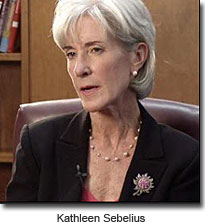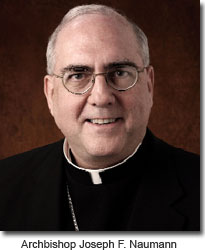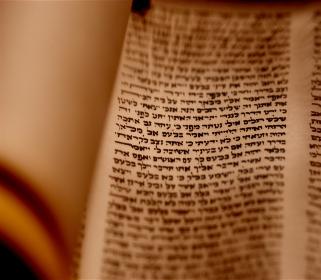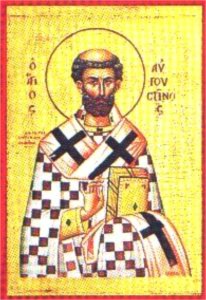Being a Catholic in America often ends up meaning that, due to the puritanical/Calvinistic influences of our protestant culture, you are a heretic that happens to goes to Mass/Divine Liturgy and Confession. In practice, this does not necessarily translate into openly espousing heterodox doctrine, rather it usually manifests itself in some sort of material heresy that is the product of overzealousness in one thing or another. The end result is usually some twisted version of Americanism or Jansenism.
Our Calvinist admixture usually displays itself around holidays of various assortments. For Americanists, the 4th of July and Thanksgiving are veritable Holy Days of Obligation. Many of this strain of contagion feel the need on these civic holidays to sing patriotic songs during the processionals and recessionals of liturgies ad nauseam. This, however, is not the focus of this post. The focus is the upcoming holiday of Halloween.
I hear it every year. Well-intentioned Catholics denouncing Halloween shouting, “It’s pagan! It’s Satanic! It’s demonic! It’s Druidic!” In reality all that they are displaying are their puritanical tendencies or how well they have been duped by duplicitous and calumniating myths fueled by Protestants and Occultists.
Sorry, but here’s a “burst your bubble” moment. Halloween is a CATHOLIC holiday.
What has happened is that there has been a long attempt to corrupt Halloween and take it over…by Satanists and Capitalists…oh, wait…uh…no, never-mind, that wasn’t necessarily redundant.
Nonetheless, instead of spending a lot of time having to argue this point again and again (it happens every year), I’ll let some others, clergyman and laymen alike, of greater reputation take the helm this time. A few articles follow with links.
If you are against Halloween, but have every desire and intention to rebuild Catholic culture, if you have any desire to actually know the TRUTH and not succumb to MYTH, then read the following articles.
SURPRISE: HALLOWEEN’S NOT A PAGAN FESTIVAL AFTER ALL
By FR. AUGUSTINE THOMPSON, O.P.
Excerpted from Catholic Parent magazine in 2000.
We’ve all heard the allegations: Halloween is a pagan rite dating back to some pre-Christian festival among the Celtic Druids that escaped church suppression. Even today modern pagans and witches continue to celebrate this ancient festival. If you let your kids go trick-or-treating, they will be worshiping the devil and pagan gods.
Nothing could be further from the truth [Preach it, Fr. Thompson!]. The origins of Halloween are, in fact, very Christian and rather American. Halloween falls on October 31 because of a pope [Yikes! Bringing out the big guns early.], and its observances are the result of medieval Catholic piety.
It’s true that the ancient Celts of Ireland and Britain celebrated a minor festival on October 31–as they did on the last day of most other months of the year. However, Halloween falls on the last day of October because the Feast of All Saints, or “All Hallows,” falls on November 1. The feast in honor of all the saints in heaven used to be celebrated on May 13, but Pope Gregory III (d. 741) moved it to November 1, the dedication day of All Saints Chapel in St. Peter’s at Rome. Later, in the 840s, Pope Gregory IV commanded that All Saints be observed everywhere. And so the holy day spread to Ireland.
The day before was the feast’s evening vigil, “All Hallows Even,” or “Hallowe’en.” In those days Halloween didn’t have any special significance for Christians or for long-dead Celtic pagans.
In 998, St. Odilo, the abbot of the powerful monastery of Cluny in southern France, added a celebration on November 2. This was a day of prayer for the souls of all the faithful departed. This feast, called All Souls Day, spread from France to the rest of Europe.
So now the Church had feasts for all those in heaven and all those in purgatory. What about those in the other place? It seems Irish Catholic peasants wondered about the unfortunate souls in hell. After all, if the souls in hell are left out when we celebrate those in heaven and purgatory, they might be unhappy enough to cause trouble. So it became customary to bang pots and pans on All Hallows Even to let the damned know they were not forgotten. Thus, in Ireland at least, all the dead came to be remembered–even if the clergy were not terribly sympathetic to Halloween and never allowed All Damned Day into the church calendar.
But that still isn’t our celebration of Halloween. Our traditions on this holiday center on dressing up in fanciful costumes, which isn’t Irish at all. Rather, this custom arose in France during the 14th and 15th centuries. Late medieval Europe was hit by repeated outbreaks of the bubonic plague–the Black Death–and it lost about half its population. It is not surprising that Catholics became more concerned about the afterlife.
More Masses were said on All Souls Day, and artistic representations were devised to remind everyone of their own mortality. We know these representations as the danse macabre, or “dance of death,” which was commonly painted on the walls of cemeteries and shows the devil leading a daisy chain of people–popes, kings, ladies, knights, monks, peasants, lepers, etc.–into the tomb. Sometimes the dance was presented on All Souls Day itself as a living tableau with people dressed up in the garb of various states of life. [You mean to tell me all those physical representations of the dead are Catholic?! Sorry to disappoint, but yes…IT SURE IS CATHOLIC…look at the Spanish Catholic world’s “day of the dead”.]
But the French dressed up on All Souls, not Halloween; and the Irish, who had Halloween, did not dress up. How the two became mingled probably happened first in the British colonies of North America during the 1700s, when Irish and French Catholics began to intermarry. The Irish focus on hell gave the French masquerades an even more macabre twist.
But as every young ghoul knows, dressing up isn’t the point; the point is getting as many goodies as possible. Where on earth did “trick or treat” come in?
CONTINUE READING THIS ARTICLE HERE.
SHOULD CATHOLICS CELEBRATE HALLOWEEN?
By SCOTT RICHERT
A Controversial Holiday:
Every year, a debate rages among Christians: Is Halloween a satanic holiday or merely a secular one? Should Christian children dress up like ghosts and goblins? Is it good for children to be scared? Lost in the debate is the history of Halloween, which, far from being a pagan religious event, is actually a Christian celebration that’s almost 1,300 years old. [emphasis added]
The Christian Origins of Halloween:
“Halloween” is a name that means nothing by itself. It is a contraction of “All Hallows Eve,” and it designates the vigil of All Hallows Day, more commonly known as All Saints Day. (“Hallow,” as a noun, is an old English word for saint. As a verb, it means to make something holy or to honor it as holy.) All Saints Day, November 1, is a Holy Day of Obligation, and both the feast and the vigil have been celebrated since the early eighth century, when they were instituted by Pope Gregory III in Rome. (A century later, they were extended to the Church at large by Pope Gregory IV.) [So, this so-called “pagan” holiday was Pontifically mandated.]
The Pagan Origins of Halloween:
Despite concerns among some Christians in recent years about the “pagan origins” of Halloween, there really are none. [emphasis added] The first attempts to show some connection between the vigil of All Saints and the Celtic harvest festival of Samhain came over a thousand years after All Saints Day became a universal feast, and there’s no evidence whatsoever that Gregory III or Gregory IV was even aware of Samhain.
In Celtic peasant culture, however, elements of the harvest festival survived, even among Christians, just as the Christmas tree owes its origins to pre-Christian Germanic traditions without being a pagan ritual.
Combining the Pagan and the Christian:
The Celtic elements included lighting bonfires, carving turnips (and, in America, pumpkins), and going from house to house, collecting treats, as carolers do at Christmas. But the “occult” aspects of Halloween–ghosts and demons–actually have their roots in Catholic belief. Christians believed that, at certain times of the year (Christmas is another), the veil separating earth from Purgatory, heaven, and even hell becomes more thin, and the souls in Purgatory (ghosts) and demons can be more readily seen. Thus the tradition of Halloween costumes owes as much, if not more, to Christian belief as to Celtic tradition.
The (First) Anti-Catholic Attack on Halloween:
The current attacks on Halloween aren’t the first. In post-Reformation England, All Saints Day and its vigil were suppressed, and the Celtic peasant customs associated with Halloween were outlawed. Christmas, and the traditions surrounding that feast, were similarly attacked, and the Puritan Parliament banned Christmas outright in 1647. In America, Puritans outlawed the celebration of both Christmas and Halloween, which were revived largely by German Catholic (in the case of Christmas) and Irish Catholic (in the case of Halloween) immigrants in the 19th century.[In short, attacks on Halloween are PURITANICAL in origin.]
The Commercialization of Halloween:
Continued opposition to Halloween was largely an expression of anti-Catholicism (as well as anti-Irish prejudice) [emphasis added]. But by the early 20th century, Halloween, like Christmas, was becoming highly commercialized [emphasis added]. Pre-made costumes, decorations, and special candy all became widely available, and the Christian origins of the holiday were downplayed.
The rise of horror films, and especially the slasher films of the late 70’s and 80’s, contributed to Halloween’s bad reputation, as did the claims of putative Satanists and Wiccans, who created a mythology in which Halloween was their festival, co-opted later by Christians. [emphasis added]
The (Second) Anti-Catholic Attack on Halloween:
A new backlash against Halloween by non-Catholic Christians began in the 1980’s, in part because of claims that Halloween was the devil’s night; in part because of urban legends about poisons and razor blades in Halloween candy; and in part because of an explicit opposition to Catholicism. Jack Chick, a rabidly anti-Catholic fundamentalist who distributes Bible tracts in the form of small comic books, helped lead the charge.
By the late 1990’s, many Catholic parents, unaware of the anti-Catholic origins of the attack on Halloween, had begun to question Halloween as well [Yes, ’tis typical…we Catholics drink the Protestant Kool-Aid…and often ask for seconds], and alternative celebrations became popular.
Alternatives to Halloween Activities:
Ironically, one of the most popular Christian alternatives to celebrating Halloween is a secular “Harvest Festival,” which has more in common with the Celtic Samhain than it does with the Catholic All Saints Day. There’s nothing wrong with celebrating the harvest, but there’s no need to strip such a celebration of connections with the Christian liturgical calendar.[thank you.]
Another popular Catholic alternative is an All Saints Party, usually held on Halloween and featuring costumes (of saints rather than ghouls) and candy. At best, though, this is an attempt to Christianize an already Christian holiday.
Safety Concerns and the Fear Factor:
Parents are in the best position to decide whether their children can participate safely in Halloween activities, and, in today’s world, it’s understandable that many choose to err on the side of caution. One concern that’s often overblown, however, is the effect that fright might have on children. Some children, of course, are very sensitive, but most love scaring others and being scared themselves (within limits, of course). Any parent knows that the “Boo!” is usually followed by laughter, not only from the child doing the scaring, but from the one being scared. Halloween provides a structured environment for fear.
Making Your Decision:
In the end, the choice is yours to make as a parent. If you choose, as my wife and I do, to let your children participate in Halloween, simply stress the need for physical safety (including checking over their candy when they return home), and explain the Christian origins of Halloween to your children. Tie the vigil explicitly to the Feast of All Saints, and explain to your children why we celebrate it, so that they won’t view All Saints Day as “the boring day when we have to go to church before we can eat some more candy.”
Let’s reclaim Halloween for Christians, by returning to its roots in the Catholic Church! [Amen! Mr Richert! …and Thank You.]
THE ORIGINAL ARTICLE CAN BE FOUND HERE.
 We did not lose China. He did.
We did not lose China. He did.



